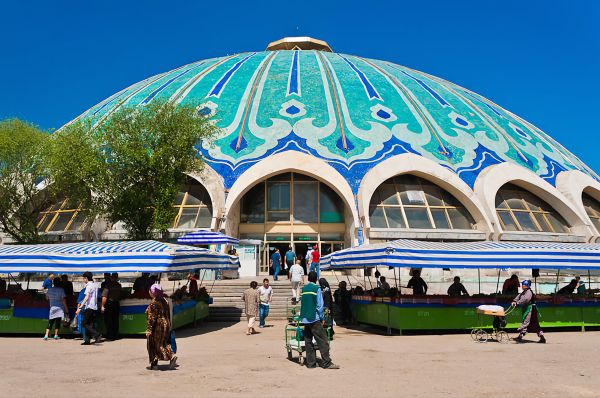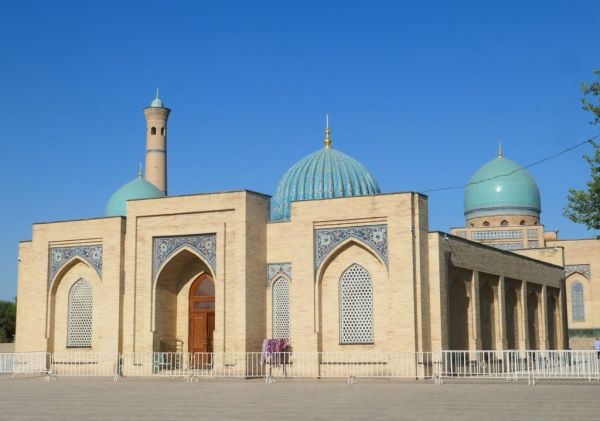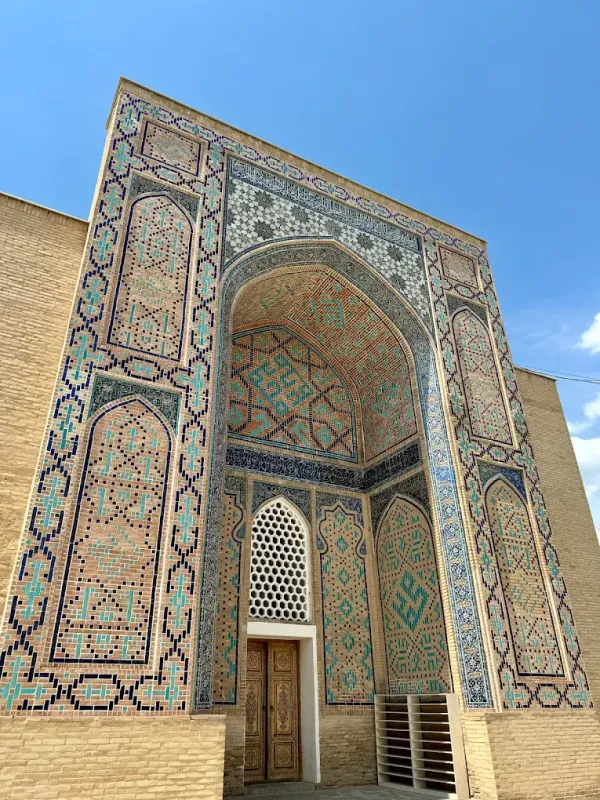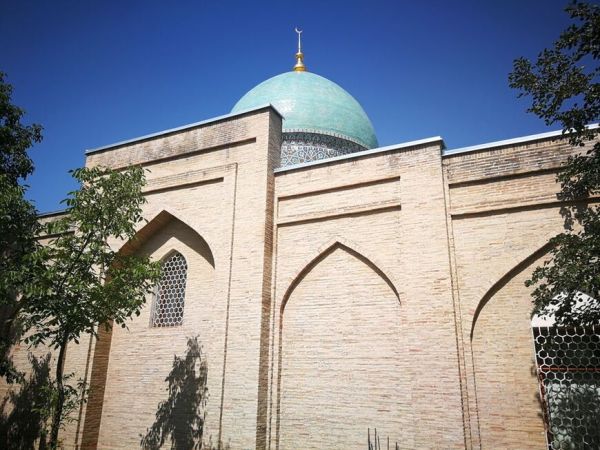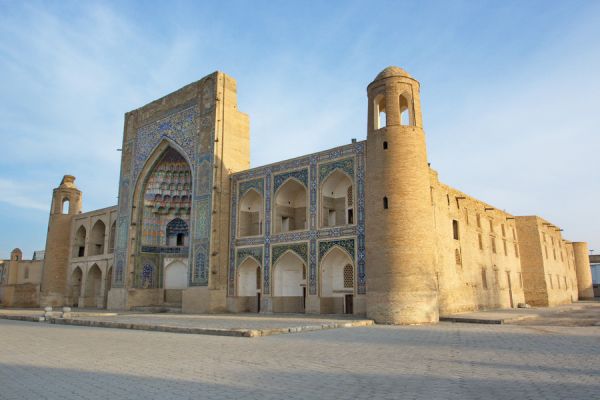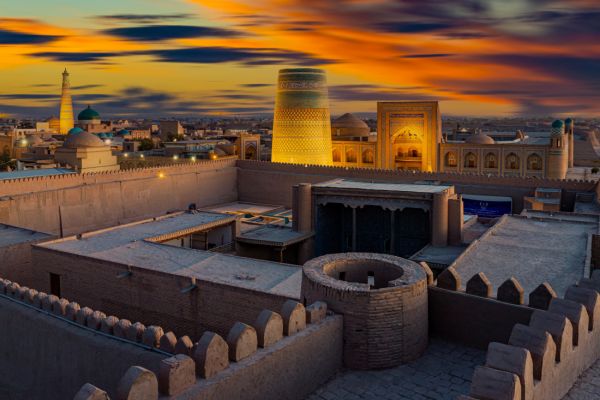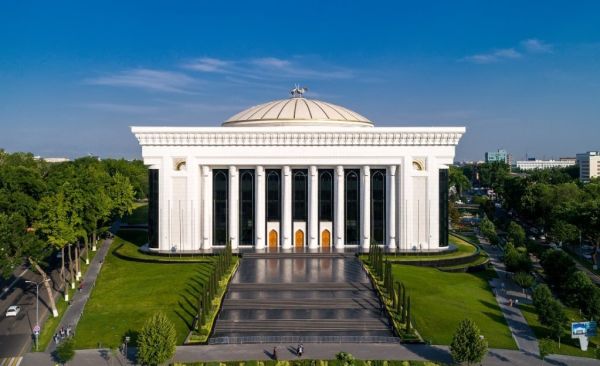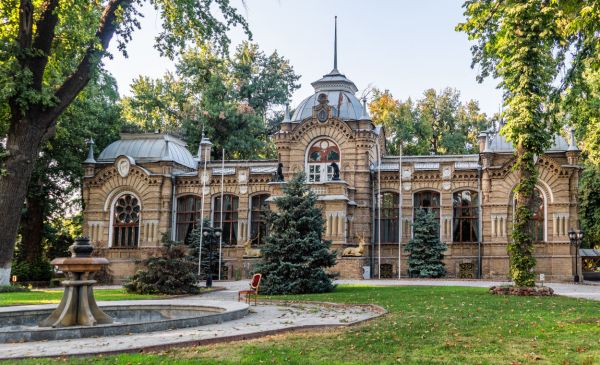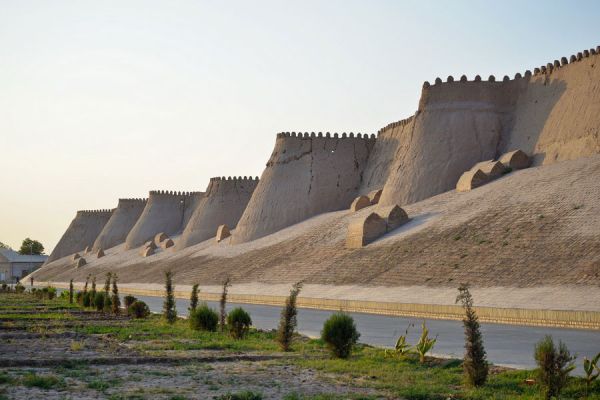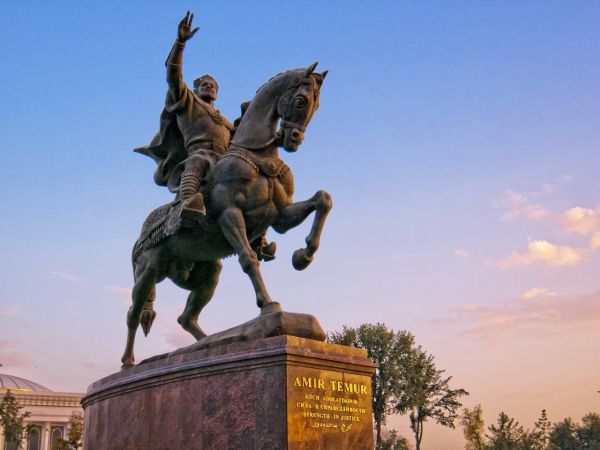Muyi Muborak Madrasah
Muyi Muborak Madrasah (also called the Usman Quran Museum) is one of the main attractions of Tashkent. Thousands of tourists rush to visit the madrasah every year, and it is no coincidence: the building itself and the manuscript stored in it are of great cultural, historical and religious value.
Muyi Muborak Madrasah houses one of the most important values of the Muslim world — the Quran of Osman, which was created in the 7th century and was one of the first sources of scripture. The text of the Quran appeared under Uthman, who was the third caliph and son—in-law of Muhammad. It is believed that the first few samples of the book were sent to the main cities of the Caliphate, and the last copy, which is now kept in the museum, the caliph preferred to keep for himself.
There is a version according to which the Koran arrived in Transoxiana with Timur. Another version says that in the middle of the 16th century, Tamerlane, returning to his homeland after defeating Sultan Bayazet near Angora and passing through Basra, brought the Koran to Samarkand, where the book lay in a madrasa for many years. By the way, many historians are inclined to this version.
After Central Asia was conquered by the Russian Empire, the Koran was transported to where it remained until the change of the state system. Then the relic was returned to Uzbekistan, where it was kept in the historical museum. In the 90s of the XX century, at the suggestion of ex-President Islam Karimov, the Koran was given to the Spiritual Administration of the country. He is now in the Muyi Muborak Madrasah.
The book consists of 353 sheets, of which 284 pages are parchment, the rest are paper, which replaced the lost sheets.
The madrasah building was built in the XVI century. Muyi Muborak translates as "holy hair". The fact is that the hair of the Prophet Muhammad is kept in the madrasah, hence the name.
The madrasah has been rebuilt several times over the centuries of its history. At one time, the building was actually used for its intended purpose and students studied in it, for a while there was a shelter for dervishes, and in 1857 the largest library was opened. In 2008, a separate building was built next to the madrasah, where the entire book collection was gradually moved. There are more than 20,000 books stored there, including unique editions, ancient manuscripts and lithographs, translations of the Quran in 30 languages.


